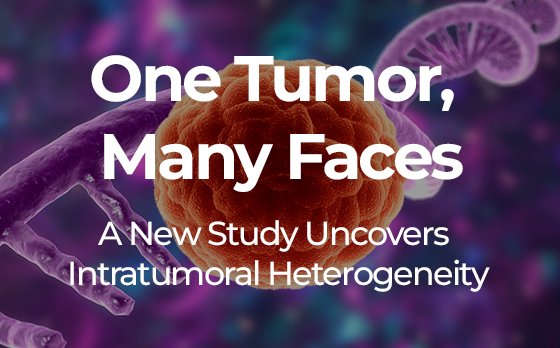Gastric cancer remains one of the leading causes of cancer-related death worldwide, particularly in regions like Asia and Latin America. Its biological complexity has posed a major challenge for both diagnosis and treatment. Although genomic technologies have allowed researchers to identify recurrent mutations and classify molecular subtypes, a major limitation persists: the inability to capture how tumor cells and their immediate environment are spatially organized and how they evolve within a single tumor. In response to this gap, an international team led by Haoran Ma, Supriya Srivastava, Patrick Tan, and Raghav Sundar developed an innovative study, recently published in Cancer Discovery, that proposes a functional and spatial view of gastric cancer. They used cutting-edge technologies such as single-cell RNA sequencing (scRNA-seq) and the GeoMx Digital Spatial Profiler (DSP) platform. In simple terms, these technologies allow researchers to analyze which genes are active in each individual cell and, at the same time, where exactly that cell is located within the tumor, while preserving the tissue’s structural context.
The team analyzed 226 samples from 121 patients, covering more than 2,000 spatially defined tumor regions and over 150,000 individual cells. From this massive dataset, they found that tumor cells do not form a uniform mass, but are instead organized into at least two functionally distinct subpopulations: G1 and G2. G1 cells tend to localize in the tumor core and display more “normal” behavior, with epithelial features (meaning they resemble the cells that line the surfaces of organs). In contrast, G2 cells cluster in the tumor periphery and exhibit more aggressive behavior, such as the ability to invade nearby tissues, promote the formation of new blood vessels (angiogenesis), and evade immune system detection. These differences cannot be seen with conventional microscopy but emerge through gene expression analysis with spatial resolution. This led the authors to define a new type of tumor heterogeneity: RNA-based intratumoral heterogeneity (RNA-ITH), meaning that different zones of the same tumor behave differently at a molecular level, even if their genetic profiles look similar.
One of the most striking parts of the study was the immune landscape analysis. Regions dominated by G2 cells showed a suppressed immune environment, with fewer T cells (which are key defenders against cancer) and a greater presence of signals that “turn off” immune responses. For instance, high levels of immune-inhibitory proteins such as PD-1, LAG-3, and TIGIT were detected, along with immunosuppressive cytokines like TGF-β and CXCL5. This means that different regions within the same tumor can have varying degrees of resistance to immune-based treatments, which may help explain why some patients respond well to immunotherapy while others don’t—or only partially do.
To understand how these different regions evolve over time, the researchers used a computational method to infer chromosomal alterations (known as sCNAs) from gene expression data. Using this, they reconstructed phylogenetic trees—essentially the tumor’s “family tree”—showing how various cell subpopulations developed. They identified two patterns of tumor evolution: a “branched evolution” model, where subclones gradually accumulate differences over time, and an “internal diaspora” model, in which multiple divergent cell types appear almost simultaneously from a common origin. This second pattern, especially common in tumors with chromosomal instability (i.e., widespread genetic disorganization), was associated with poorer clinical outcomes such as reduced overall survival.

Figure 1. Schematic of the tumor’s spatial organization and functional differences between G1 and G2 cells, highlighting their roles in angiogenesis, immune infiltration, metastasis, and clonal evolution.
The relevance of this work goes far beyond gastric cancer. This study shows that solid tumors are not homogeneous masses, but complex biological landscapes composed of different “zones” with distinct behaviors. Understanding this internal organization opens the door to new ways of treating cancer: instead of applying a single therapy to the whole tumor, future treatments could be tailored to target the most aggressive or resistant areas, like striking strategic points on a map. It could also change how biopsies are performed, by guiding them to the most informative areas rather than taking random tissue samples. Ultimately, this study proposes a new way to look at cancer—not as a single disease, but as an evolving ecosystem that must be mapped to be effectively treated.
Main reference:
Ma H, Srivastava S, Ho SWT, Xu C, Lian BSX, Ong X, Tay ST, Sheng T, Lum HYJ, Aishah Binte Abdul Ghani S, Chu Y, Huang KK, Goh YT, Lee M, Hagihara T, Shi Ya Ng C, Tan ALK, Zhang Y, Ding Z, Zhu F, Ng MSW, Joseph CRC, Chen H, Li Z, Zhao JJ, Rha SY, Teh M, Yeong J, Yong WP, So JB, Sundar R, Tan P. Spatially Resolved Tumor Ecosystems and Cell States in Gastric Adenocarcinoma Progression and Evolution. Cancer Discov. 2025 Jan 9. doi: 10.1158/2159-8290.CD-24-0605. Epub ahead of print. PMID: 39774838. https://pubmed.ncbi.nlm.nih.gov/39774838/
Other references:
Morgan E, Arnold M, Camargo MC, Gini A, Kunzmann AT, Matsuda T, et al. The current and future incidence and mortality of gastric cancer in 185 countries, 2020–40: a population-based modelling study. EClinicalMedicine 2022;47:101404. https://pubmed.ncbi.nlm.nih.gov/35497064/
Ferlay J, Colombet M, Soerjomataram I, Parkin DM, Piñeros M, Znaor A, et al. Cancer statistics for the year 2020: an overview. Int J Cancer 2021;149:778–89. https://pubmed.ncbi.nlm.nih.gov/33818764/
Alsina M, Arrazubi V, Diez M, Tabernero J. Current developments in gastric cancer: from molecular profiling to treatment strategy. Nat Rev Gastroenterol Hepatol 2023;20:155–70. https://pubmed.ncbi.nlm.nih.gov/36344677/


